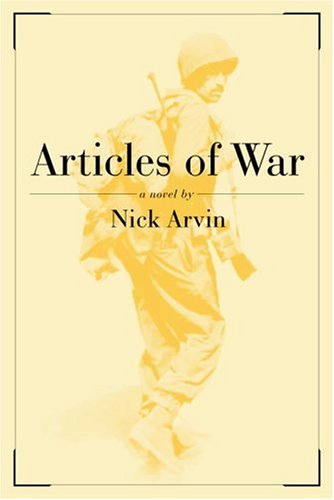Articles of War
In Nick Arvin’s first novel, George Tilson, called “Heck” for his reluctance to swear, arrives at Omaha Beach just after the D-Day landings. His first military experiences encompass boredom, avoiding the attention of one’s superiors, and the “hurry up and wait” mentality that pervades the army. When he is finally sent into battle, he panics and runs away, recognizing himself as a coward.
The novel invites obvious comparisons with Stephen Crane’s The Red Badge of Courage, and Heck might even be called the twentieth century’s answer to Crane’s Henry Fleming. Both protagonists are naïve, untried boy-men who panic when confronted with combat and eventually prove themselves by being wounded. Even Heck’s nickname, however Arvin cares to derive it, is a diminutive of Henry.
Arvin’s narration is episodic and disconnected. “Impressionist” was a term applied to Crane’s novel. But where Crane laid on every emotional tool in his literary palette, Arvin chooses instead to keep his prose spare and to reach for resonance by underplaying Heck’s experiences. For me, this minimalist style meant that I never really understood Heck and, instead of Everyman, he became No Man. The lack of cohesive plot and general sense of disorientation while reading was probably intentional on the part of the author, mirroring Heck’s own lack of direction and general cluelessness, but I found Articles of War to be a less than satisfying reading experience.










